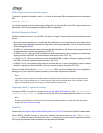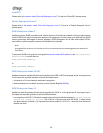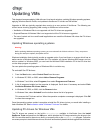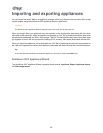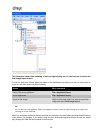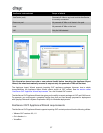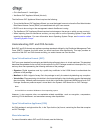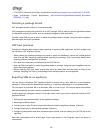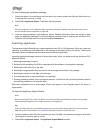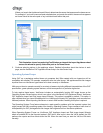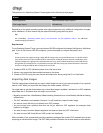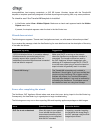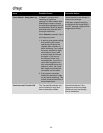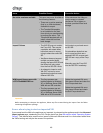
39
• CTX121652: [Overview of the Open Virtualization Format] (http://support.citrix.com/article/CTX121652)
• [Open Virtualization Format Specification] (http://www.dmtf.org/standards/published_documents/
DSP0243_1.1.0.pdf)
Selecting a package format
OVF packages contain a series of uncompressed files.
OVA packages are simply one archive file of an OVF package. OVA is useful for specific applications where
it is beneficial to have just one file, such as creating packages for Web downloads.
Consider using OVA only as an option to make the package easier to handle. Using this option lengthens
both the export and import processes.
OVF best practices
Consider the following best practices when importing or exporting VMs, appliances, and disk images using
the XenServer OVF Appliance Wizard:
• When creating an appliance package you intend to import into XenServer, remove any vendor-specific
tools from the VMs' operating systems before exporting the package. This is particularly helpful when
importing VMware packages into XenServer.
• Citrix does not recommend manually editing the OVF XML file.
• Only use OVA as an option to make the package easier to manage. Using this option lengthens both the
Export and Import process.
• Before importing OVF files, make sure all files are in the same folder and that folder is unique to the
package. Importing OVF files (in one package) from multiple locations is not supported.
Exporting VMs as an appliance
You can use the XenServer OVF Appliance Wizard to export one or more VMs as a virtual appliance
package. A VM must be shut down before exporting it. It cannot be hibernating or in a suspended state.
You can export an individual VM or all shutdown VMs in a host or pool. You can also export all shutdown
VMs associated with all hosts currently connected to XenCenter.
Creating appliance packages consists of five major tasks, which you perform using the XenServer OVF
Appliance Wizard:
1. Defining the name and destination of the appliance package.
2. Selecting the VMs for export.
3. Including one or more EULAs to protect the software inside the appliance package. (Optional.)
4. Configuring security for the exported package. (Optional.)
5. Configuring compression and other advanced export options, such as creating an OVA TAR file for the
appliance.
Each task corresponds with a wizard page. Errors may appear on the Progress page if the export is
unsuccessful.



